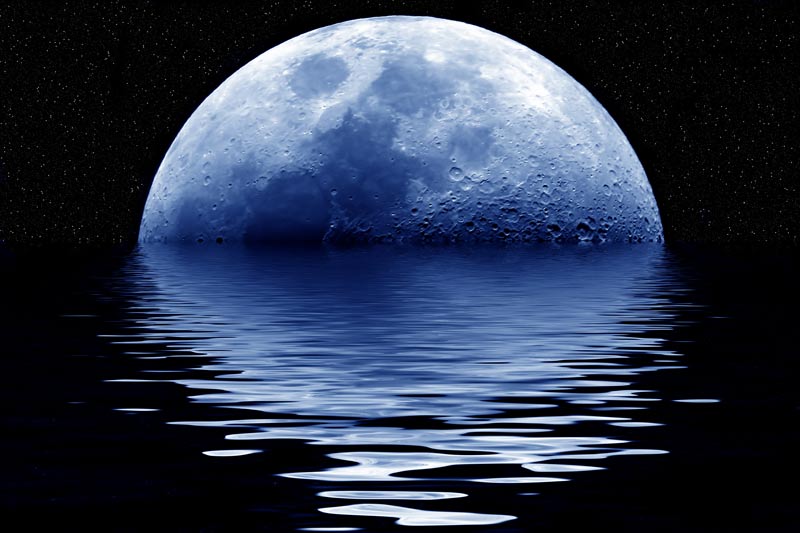What Is a Blue Moon, Anyway?

Skywatchers tonight (March 31) will be treated to the second and final Blue Moon of 2018, just on the eve of Easter. What is this type of moon, and is it actually blue?
For those who wanted to see an aqua-hued orb, sorry but the term "Blue Moon" has nothing to do with the color. Instead, it refers to the appearance of an additional full moon in a given time period. Under the most popular definition today, a Blue Moon is the second full moon in a calendar month.
The moon reached its peak full phase at 8:37 a.m. EDT (1237 GMT), but the moon will still look pretty full for the following 24 hours.
Why does a Blue Moon happen? The moon changes phases as it orbits the Earth, according to the amount of light reaching it from the sun. The moon circles Earth every 27 days, but the geometry of the positioning of the Earth, sun and moon is the same every 29.5 days.
In other words, there are 29.5 days between one full moon and the next full moon. So it's unusual to have two full moons in a 30- or 31-day month. Also, February, which has only 28 or 29 days (during leap years), will never have a Blue Moon. Enjoy tonight's spectacle, because the next Blue Moon won't happen until Oct. 31, 2020.
"Most Blue Moons look pale gray and white, indistinguishable from any other moon you've ever seen," NASA stated. "Squeezing a second full moon into a calendar month doesn't change the physical properties of the moon itself, so the color remains the same."
Sometimes, however, the moon does look blue. But it has to do with atmospheric conditions — not calendar time. A famous example occurred in 1883, after the volcano Krakatoa erupted. The moon appeared blue because of all the dust the volcano lofted into the air. NASA says this particular event probably generated the phrase "Blue Moon," but volcanoes aren't the only reason a moon can look blue. Dust storms or forest fires can also generate this effect.
Sign up for the Live Science daily newsletter now
Get the world’s most fascinating discoveries delivered straight to your inbox.
Incidentally, there is an older definition of a Blue Moon that refers to an extra full moon happening in a season. The Blue Moon was the third full moon during a season that had four full moons. This happens when a particular year has 13 full moons instead of the usual 12.
Even under that definition, the next seasonal blue moon won't happen until May 18, 2019. So if you have a clear night tonight, enjoy watching the moon cross the sky. You can use just your bare eyes to see the spectacle, or if you like, take out binoculars or a telescope to take a closer look at some of the craters and other features on the moon.
If the skies are cloudy, don't worry — you can always watch the Blue Moon online. Slooh will run a live webcast at 4 p.m. EDT (2000 GMT) that you can view here.
Originally published on Live Science.

Elizabeth Howell was staff reporter at Space.com between 2022 and 2024 and a regular contributor to Live Science and Space.com between 2012 and 2022. Elizabeth's reporting includes multiple exclusives with the White House, speaking several times with the International Space Station, witnessing five human spaceflight launches on two continents, flying parabolic, working inside a spacesuit, and participating in a simulated Mars mission. Her latest book, "Why Am I Taller?" (ECW Press, 2022) is co-written with astronaut Dave Williams.









